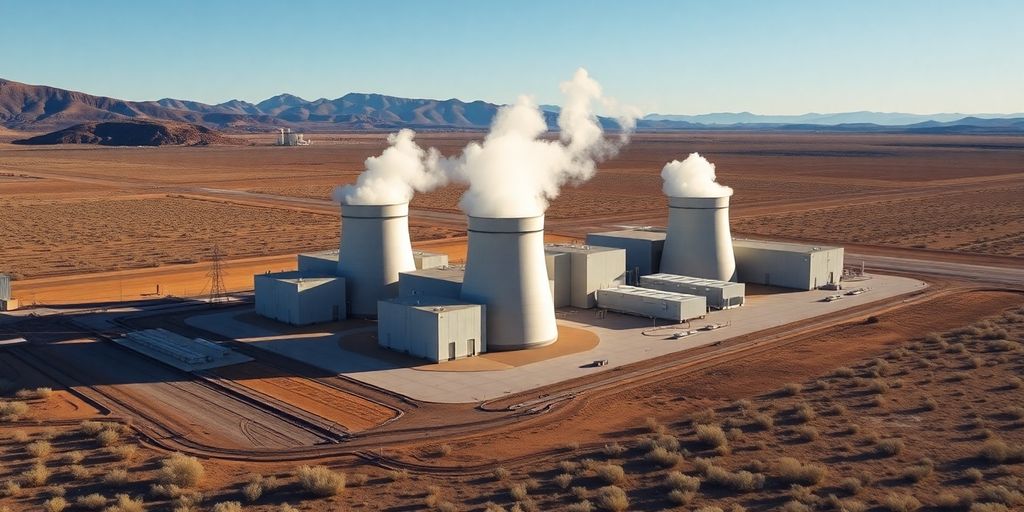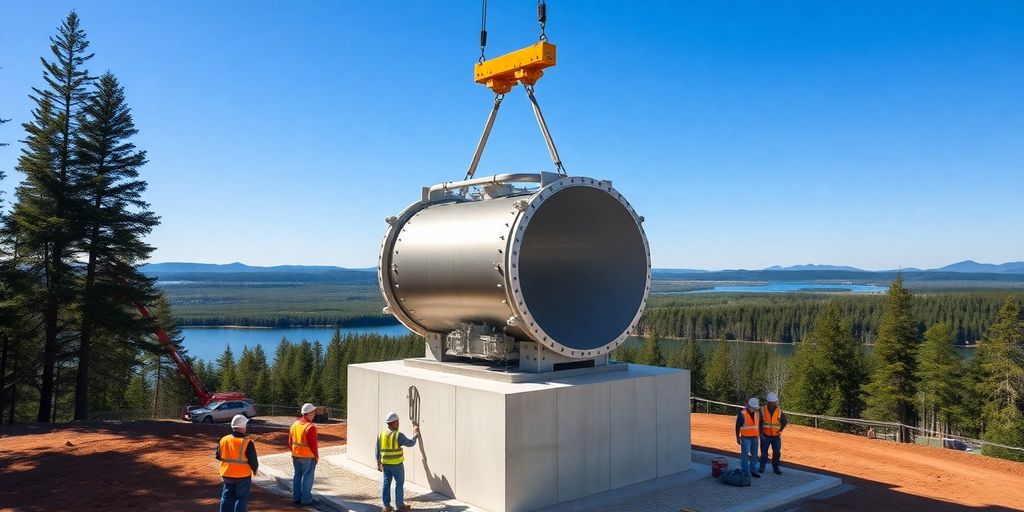Wyoming communities and industry leaders are investigating portable nuclear microreactors to diversify energy sources, create jobs, and reduce carbon emissions. A public meeting in Bar Nunn drew mixed reactions, while Tata Chemicals North America inked a letter of intent for up to eight microreactors to power its soda ash operations by 2030.
Key Takeaways
- Radiant Energy plans a 350,000-sq-ft microreactor factory on 130 acres in Natrona County.
- Initial workforce of 70–80 jobs, scaling to about 230 positions.
- Tata Chemicals LOI secures up to eight microreactors for soda ash production by 2030.
- Legislative bills on used fuel storage and advanced reactors stalled in the Wyoming Legislature.
- Each 1 MW microreactor can power roughly 1,000 homes and supply both electricity and process steam.
Community Meeting In Bar Nunn
A packed town hall in Bar Nunn heard Radiant’s Director of Operations outline plans for a campus-style manufacturing facility. Supporters highlighted the local energy workforce and economic diversification.
Concerns raised:
- Safety of spent nuclear fuel and dry-cask storage.
- Potential tax and infrastructure burdens on local residents.
- Federal and state regulatory approval timelines.
Radiant representatives reassured attendees that:
- Spent fuel will be stored in proven dry-cask systems under negative pressure.
- No taxpayer dollars fund the project or cleanup.
- The U.S. Nuclear Regulatory Commission will oversee all operations.
Industrial Interest From Tata Chemicals
Tata Chemicals Soda Ash Partners signed a letter of intent with BWXT Advanced Technologies for up to eight small modular reactors. Key drivers:
- Reduce reliance on external electricity from Rocky Mountain Power.
- Replace coal and natural-gas boilers used for steam in refining.
- Meet customers’ demand for low-carbon soda ash.
Deployment target: 2030, pending final agreements, investor commitments, and grant funding.
Workforce And Economic Impact
Radiant’s projected staffing:
| Category | Opening Phase | Full Operation |
|---|---|---|
| Technicians (assemblers, welders) | 35–40 | 115 |
| Business Operations (finance, logistics) | 35–40 | 115 |
| Total | 70–80 | 230 |
Local leaders anticipate:
- Higher tax revenues from utilities upgrades.
- Retention of existing energy-sector talent.
- Attraction of new suppliers and service providers.
Regulatory And Legislative Challenges
Two key bills—House Bill 16 on used fuel storage amendments and Senate File 186 on advanced reactor fuel storage—failed in committee. Lawmakers cited:
- Uncertainty over long-term federal waste repositories.
- Public apprehension about nuclear safety.
Radiant remains optimistic that updated legislative language and ongoing dialogue will address these hurdles before prototype construction in late 2026.
Future Outlook
If permits proceed on schedule, Radiant aims to begin operations by 2028. Meanwhile, Tata’s deal could set a precedent for industrial microreactor deployment nationwide. Stakeholders agree that balancing rigorous safety standards, community engagement, and regulatory clarity will be crucial for Wyoming to become a hub of advanced nuclear innovation.












